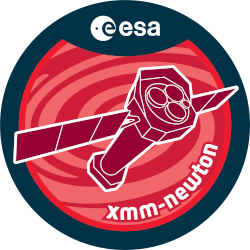

| Proposal ID | 092130 |
| Title | The first X-ray observations of a fast blue optical transient at very late times |
| Download Data Associated to the proposal | https://nxsa.esac.esa.int/nxsa-sl/servlet/data-action-aio?obsno=0921300101 |
| DOI | https://doi.org/10.57780/esa-h2fn8gf |
| Principal Investigator, PI | Prof Raffaella Margutti |
| Abstract | We propose to acquire the first deep X-ray observations of a fast and blueoptical transient (FBOT) at very late times. FBOTs are a new class of transientswith luminosities and time scales that challenge traditional SN models. As aresult, the intrinsic nature of their energy source is unknown. Motivated by ourrecent finding of persistent, luminous X-ray emission at the location of thenearest FBOT AT2018cow, we propose deep XMM observations of this source at$delta t$$>$$5$ yrs. By mapping the long-term evolution and spectrum of thisX-ray source, these observations will shed light on the connection of FBOTs withmanifestations of accreting BHs. By exploring a new part of the phase space,this proposal opens a new window of investigation on this new class of engine-driven transients. |
| Publications | No publications found for current proposal! |
| Instrument | EMOS1, EMOS2, EPN, OM, RGS1, RGS2 |
| Temporal Coverage | 2024-01-23T01:28:28Z/2024-01-24T15:10:08Z |
| Version | 21.23_20231215_1101 |
| Mission Description | The European Space Agencys (ESA) X-ray Multi-Mirror Mission (XMM-Newton) was launched by an Ariane 504 on December 10th 1999. XMM-Newton is ESAs second cornerstone of the Horizon 2000 Science Programme. It carries 3 high throughput X-ray telescopes with an unprecedented effective area, and an optical monitor, the first flown on a X-ray observatory. The large collecting area and ability to make long uninterrupted exposures provide highly sensitive observations. Since Earths atmosphere blocks out all X-rays, only a telescope in space can detect and study celestial X-ray sources. The XMM-Newton mission is helping scientists to solve a number of cosmic mysteries, ranging from the enigmatic black holes to the origins of the Universe itself. Observing time on XMM-Newton is being made available to the scientific community, applying for observational periods on a competitive basis. |
| Creator Contact | https://www.cosmos.esa.int/web/xmm-newton/xmm-newton-helpdesk |
| Date Published | 2025-02-06T00:00:00Z |
| Last Update | 2025-08-04 |
| Keywords | XMM-Newton, OM, RGS, EPIC, X-ray, Multi-Mirror, SAS |
| Publisher And Registrant | European Space Agency |
| Credit Guidelines | European Space Agency, Prof Raffaella Margutti, 2025, 'The first X-ray observations of a fast blue optical transient at very late times', 21.23_20231215_1101, European Space Agency, https://doi.org/10.57780/esa-h2fn8gf |